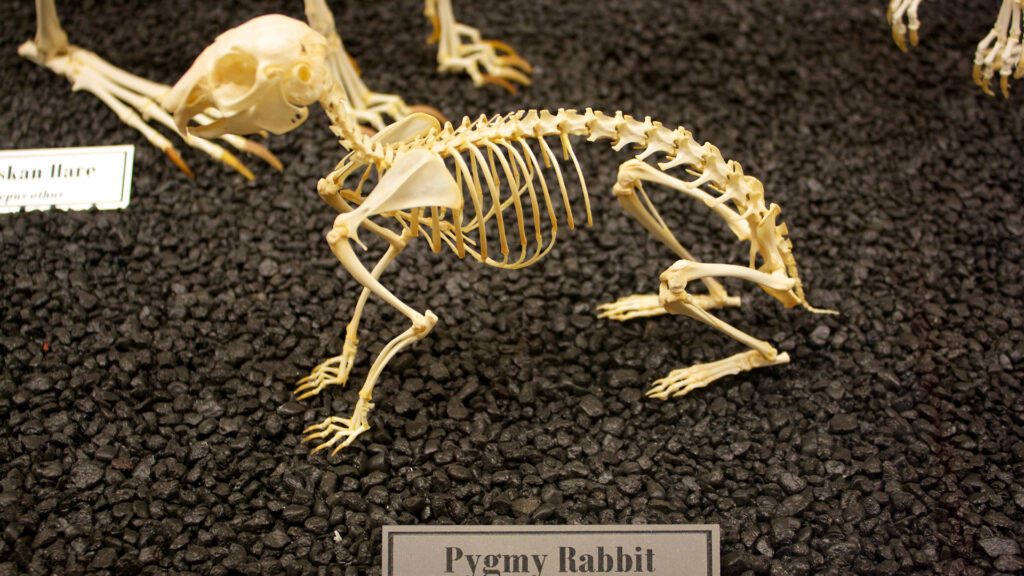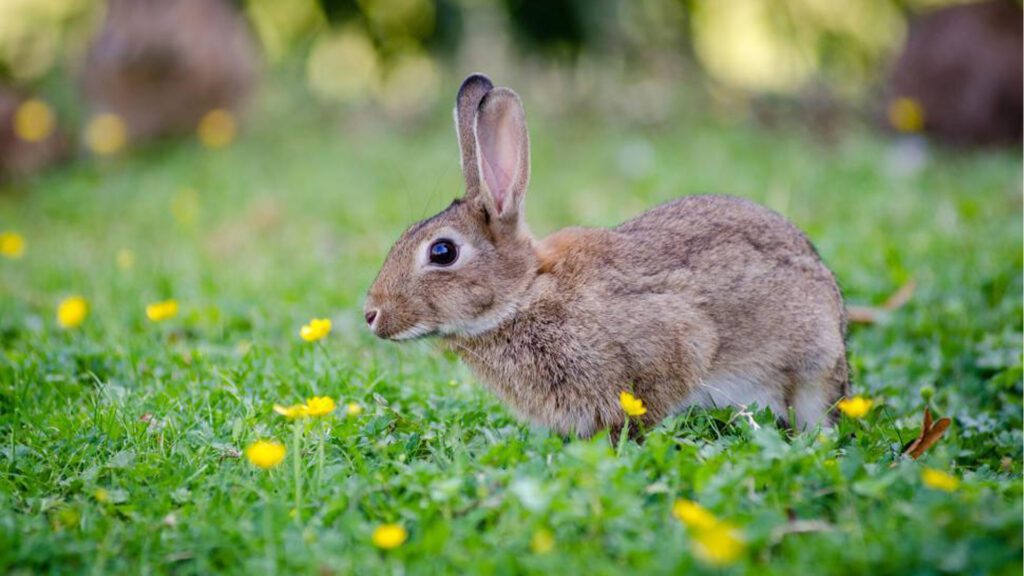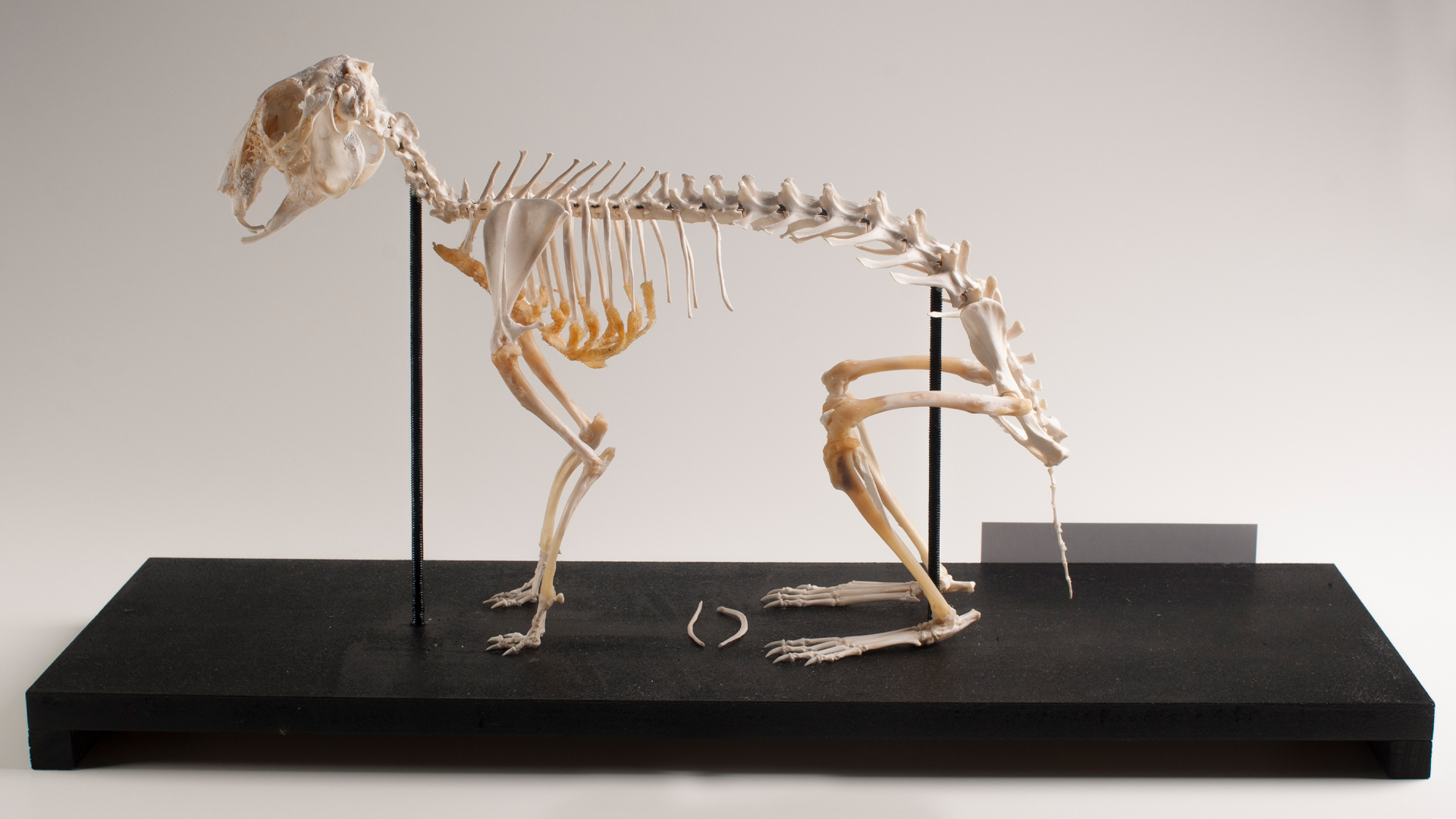Have you ever watched a rabbit hop and wondered about the number of bones it has? How exactly is it so limber?
Read this article to learn about rabbit skeletons.
Rabbit Biology: How Many Bones Does a Rabbit Have?
The total bone count of a rabbit typically ranges between 200 to 220 bones. Like other mammals, their skeletal system provides structure, protects vital organs, and allows movement.
Rabbits have a skeletal structure adapted for their lifestyle as prey animals. Their bones are lightweight yet strong, allowing for agility and quick movements to escape predators.

The Spinal Column of a Rabbit
The spinal column is like the backbone of a bunny’s body. It alone consists of 46 bones that are grouped into different sections, each with a distinct role to play.
Neck Support with Cervical Vertebrae
Rabbits have 7 cervical vertebrae, which are the bones that make up the neck. These bones give the rabbit the ability to turn its head.
Chest Bones: Thoracic Vertebrae
The chest area of a rabbit is made up of 12 thoracic vertebrae. These bones help the rabbit with its breathing and movement.
Lower Back: Lumbar Vertebrae
Supporting the lower back are 7 lumbar vertebrae. These are the bones that a rabbit uses while running or hopping. They contribute to the much quick movements.
Pelvis Connection: Sacral Vertebrae
The sacral part is a set of 4 fused bones that connect the spine to the pelvis.
This fusion provides stability for the their abdominal cavity along with hind legs, essential for its jumps.
The Tail: Coccygeal Vertebrae
At the very end of the spine are the coccygeal vertebrae, which make up the tail. Rabbits have around 16 of these tail bones.
These bones are of extreme importance for balance. They keep the entire body even, especially when the rabbit is making sharp turns and quick hops.
Other Bones
The other bones of rabbit lie in these body parts:
Legs
In 2 pairs of legs, rabbits have 7 tarsal bones (the ankle), 4 digits on both hind legs. They have 9 carpal bones (the wrist), and 5 digits on both fore legs.
The hopping is made possible due to the longitudinal hind legs being longer than the fore legs.
Mouth
The anterior section of the rabbit skeleton includes maxilla and mandible. They are associated with dental structures crucial for gnawing.
A measurement of growth rate of the incisors gave a value of 2 mm per week for the maxilla and 2.4 mm for the mandible. The growth rate of the molars and premolars is around 4 times slower (2 mm per month)
Skull
A rabbit skull has 22 separate bones. These bones include the cranial and facial structures, contributing to its overall shape and function.
Unique Features of Rabbits’ Bones

Here’s a closer look at what makes rabbit bones so special:
The walls of rabbit bones are quite thin and can break more easily. So, be considerable and handle them gently.
Rabbits have an extension of bones in their lower back, called lumbar, that gives them the ability to bend and stretch with ease.
The muscles of a hind legs are particularly thick and strong. They help rabbits cover large and wide distances.
The back legs are longer than their front legs, because of the lateral tibia and fibula bones. This length supports it’s weight when jumping and kicking with extreme force.
The 7th vertebra is particularly vulnerable, and a break here can cause serious damage to the spinal cord.
The rabbit skeleton is usually delicate when compared with other mammals. It makes up only 8 percent of the body weight or mass, as compared to 12 to 13 percent of fat in cats.
What Role Do The Teeth Play In a Rabbit Skeleton?
Rabbits possess four incisor teeth in the upper jaw and two in the lower jaw, covered with a layer of enamel. These teeth show continuous growth throughout their life.
Thus, the presence of these jugal molar teeth is essential for processing food, particularly their herbivorous diet.
Final Thoughts!
The skeletal structure of rabbits is both intricate and fragile. It’s designed to support their unique hopping behavior, but it also requires careful handling to prevent injury.


